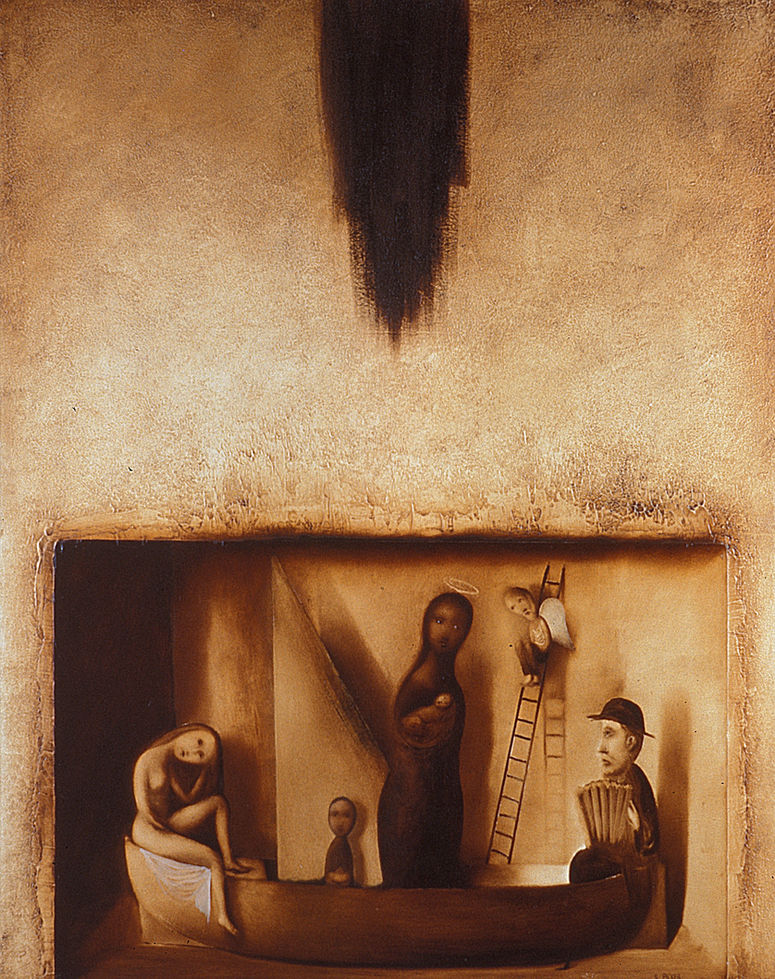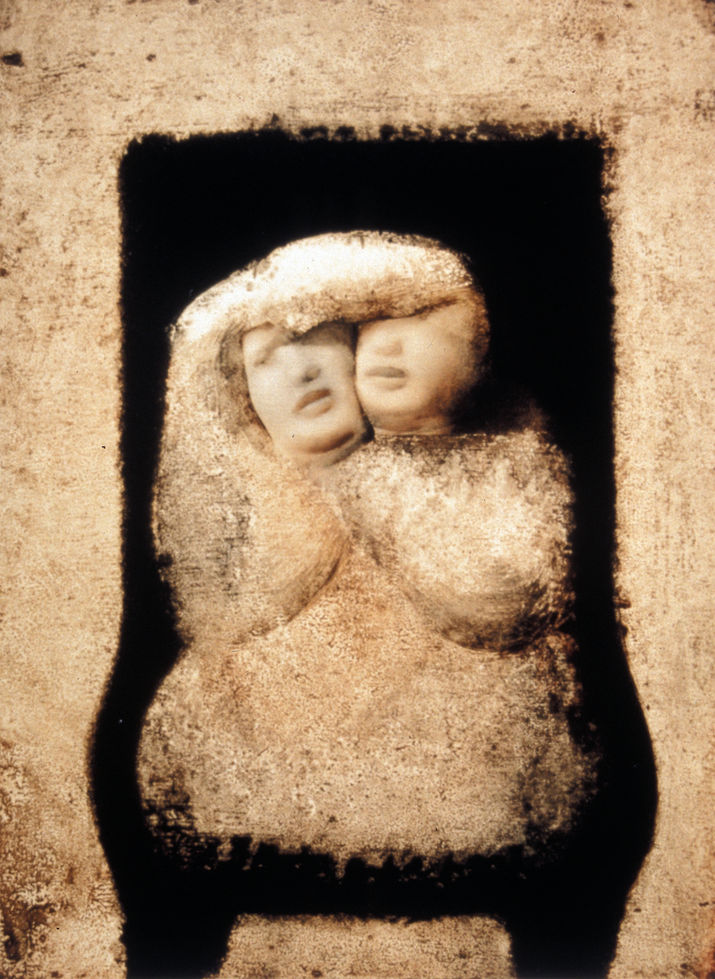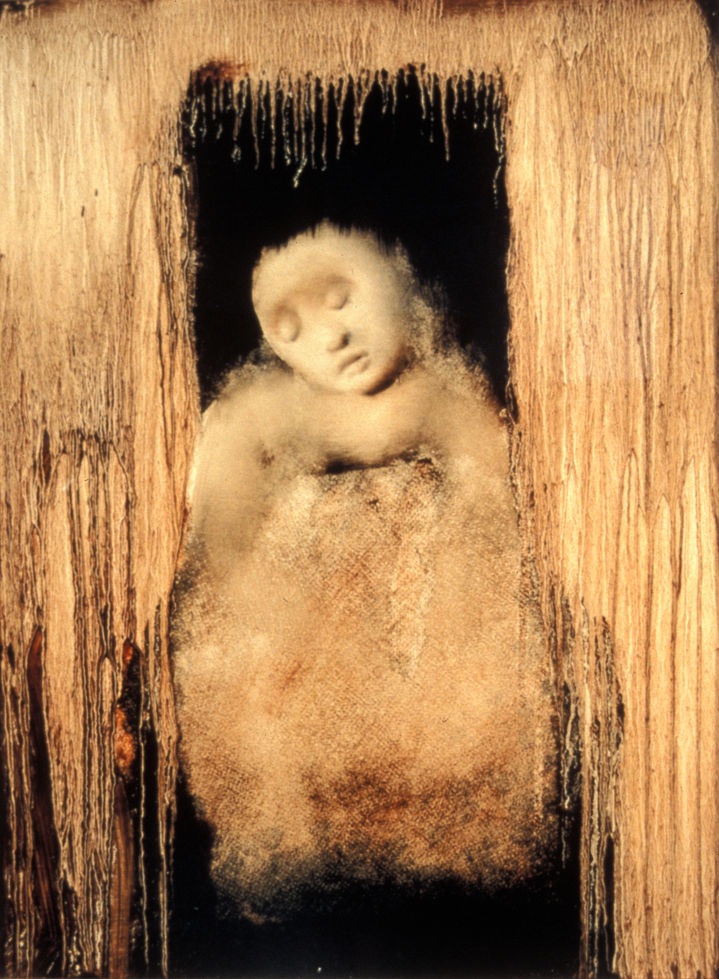The Spiritual

After moving into a tiny, magical house on the top of a hill and setting up my studio, I started to read the Bible. It was the first time that I had ever read it. Not because I suddenly became religious but because I wanted to find new subject matter for my next paintings. I thought that most of the universal human emotions, such as greed, envy, lust, compassion, and so on, could be found in that book.

1995
Some years earlier, I had been living in the south end of Boston, in the Piano Factory, an industrial building that had been remodeled into a place exclusively for artists. I was surrounded by painters, sculptors, actors, and musicians. Five blocks away was my studio, a huge warehouse surrounded by drug dealers, car thieves, robbers, and prostitutes. The day I moved into the studio, to be on good terms with the trouble-making neighbors, I hosted a party with an ample supply of beer barrels and invited them all in to see my paintings. Besides being a very entertaining evening, the party had an immensely gratifying result. They all became my friends and, as a consequence, my steadfast and loyal protectors. From then on, I always felt safe walking to my studio. It is there where I painted my series of paintings, “Spiritual Souls.”
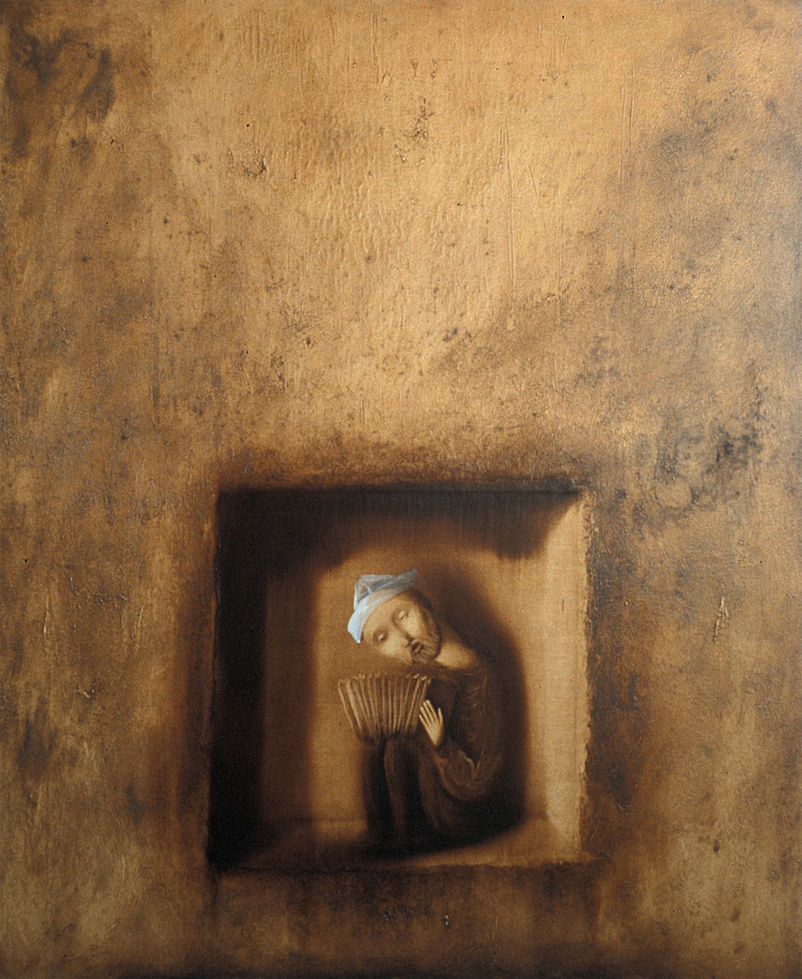
1995
After spending twenty-two years in Boston and having had more than twenty-six exhibitions, I moved to Gallup, a small town in the Southwest, not far from the Capital of the Navajo, Hopi, Ute, and Zuni nations. I immediately felt at home there. The many eucalyptus trees and arid landscapes reminded me of Chile. There was no buzz, no fashions, no trends, and not a single place where you could get a cappuccino coffee, which delighted me. One of the first people I met when I arrived was a Czech photographer named Milan Sklenar. He had been living there for some time and introduced me to some of the indigenous tribe members in the area. In his jeep, we traveled long distances to small villages where the residents invited us to sit on the rooftops of their adobe dwellings to watch the sacred rain dance ceremonies below. Some of these rituals lasted for days without interruption. The monotonous dance, accompanied by the constant beat of drums, never ceased to mesmerize me. It all took place in isolated areas or regions that tourists had never heard of or visited, or if they had, weren’t allowed in. Milan was highly respected and trusted by the local indigenous peoples and was the only white man allowed to enter their territory. Being his friend, I was automatically welcomed by the priests of the various tribes. These experiences had a deep influence on my art. They taught me to be perseverant and to have faith in my dreams and visions.

1996
The Southwest skies were breathtaking, and the mountains majestic. I thought that if God lived somewhere, it would be there, in New Mexico. There was a spirituality in the air that permeated everything. It drew me to look far beyond the immediate horizons while at the same time delve deep inside myself. After a profound introspection, I finally thought I understood what my art was all about, leading me to write a manifesto titled Old-Child Art.
1997
After writing the manifesto, I traveled to Boston for an exhibition of my latest work, Old Child Visions. Given that I would only stay there for a short time, I got myself some art supplies and painted a series of quick paintings. I covered the canvases with very thick Gesso to build a heavily textured underpainting that I then washed over with highly diluted oil paint. I was looking for the spontaneity and fluidity of watercolors. The paintings had an earthy feeling, perhaps to express my fondness for New Mexico.

1997
When I returned to Gallup, I had made up my mind to move to Santa Fe. I packed some paintings in the back of my pick-up truck and left. I showed the paintings to various galleries and received a wide positive response. The first of them was Turner Carroll, who introduced me to the Mexican painter Abel Galvan, the only Latino artist in the gallery. We instantly became close friends.
In the end, though, I signed a contract with Meredith Kelly, a brand-new gallery. The owner was a Canadian woman named Mary Kelly, who had just arrived from Canada. She procured me a studio and ensured I had everything I needed to paint. The studio was suitable but small, it didn’t have a shower, so I had to walk a long distance every day to shower at the YMCA. When the day of the exhibition came, I was surprised. She meticulously organized the event in the most grandiose manner. She hired a team of young men, all dressed in costumes that resembled the uniforms of the Vatican Swiss Guard, as hosts. She installed a red carpet that went all the way from the street to the entrance door of the gallery, where all the guests were required to show their invitation cards before being allowed admittance. She also handed me a bunch of real 24-karat gold pens for me to sign autographs on the beautifully designed catalogs she had made. Furthermore, knowing that I loved vodka, she made sure there was a generous supply of it kept at all times in the back room.
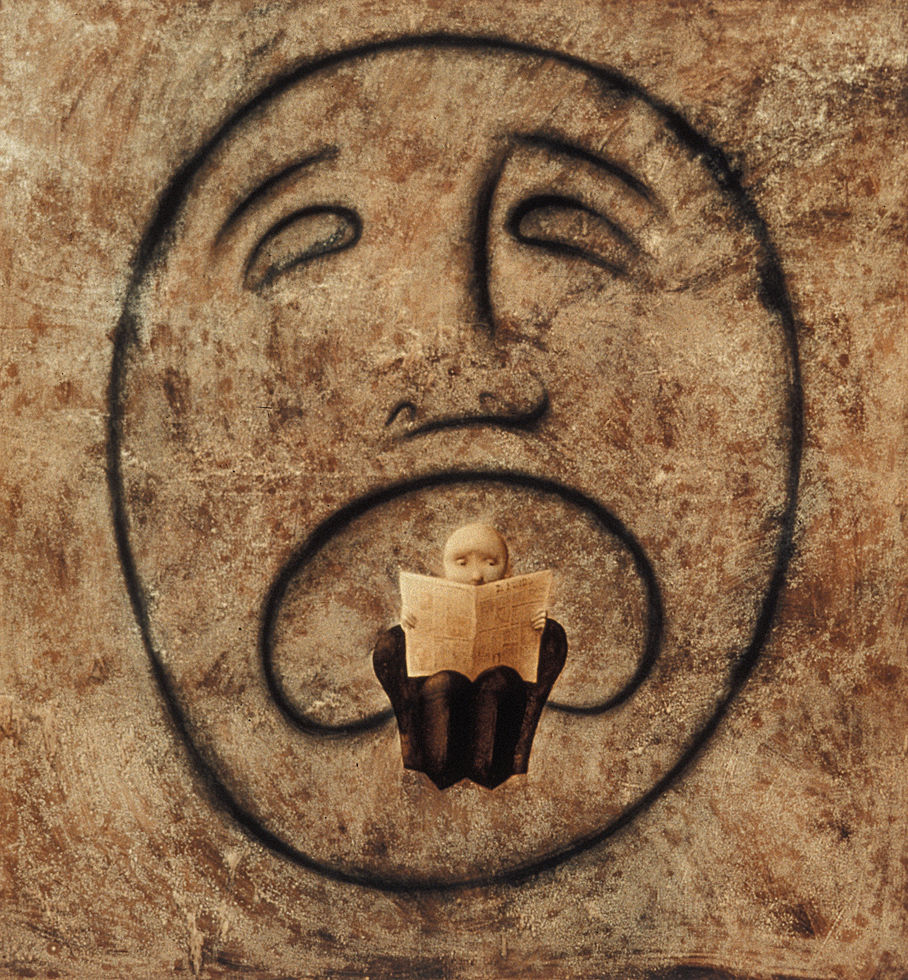
The exhibition at Meredith Kelly was a big success. All the paintings were sold.

1999
One morning I walked to Meredith Kelly Gallery, but it was closed. Mary Kelly was gone, and so were some of the artworks of the artists that she represented, including many of my larger paintings. She vanished without a trace. Police and investigators got involved in the search. Rumors circulated about her disappearance, and myriad explanations and theories flourished about her whereabouts. I was struck by disbelief; she didn’t seem like the kind of person who would cheat or swindle anyone. She had always been extremely polite and soft-spoken. Even though she vanished with some of my paintings, I still feel grateful to her. She was the person who put me on the map as an artist. She also ensured I could make a living off my art. Nothing was ever heard from her again.

2000
I locked myself in the studio, unrolled a big roll of a very high-quality etching paper, and started to let the paint flow. I let it stream, run, spill, dribble, dissipate, and almost disintegrate all my human figures. They were all about humanity’s struggle to stay humane.

2000
I moved into a huge building that had been a commercial outlet at some point. It had an extremely high ceiling. This became my new studio. With the help of some construction workers and a tall crane, I installed a swing inside. When you swung on it, it felt like flying.
One afternoon, while swinging on the swing, I received a mysterious package. It was a box full of chocolates and fine wine. A letter accompanied the contents. It was signed by Sally and Robert Jensen from Lake Tahoe, Nevada. They were visiting Santa Fe and wanted to meet me.
About a week later, Mr. Jensen arrived, accompanied by his wife. They invited me to lunch. They introduced themselves as art dealers interested in promoting and selling my work. He also had a commission for me if I was interested in starting immediately. It consisted of painting six paintings for the hallway of a client's large home in Lake Tahoe. I took the commission and painted the paintings.

2000
There comes a time in our life when we stop to assess who we are. I took a deep look at myself and realized that I had climbed tall ships at sea, had traveled the world, but I still didn’t know who I was or where I was heading. I found myself grappling with self-doubt. My life was on the brink of deconstructing itself. During this time, I painted a series of paintings titled “Labyrinth.”

2001
My inner light was growing dimmer. At dusk, I packed a suitcase and left Santa Fe for Barcelona.

Art on the Street
While wandering the streets of Barcelona, I saw a charcoal drawing on the pavement that drew my attention.
I struck up a conversation with the artist sitting next to it, but It turned out he wasn’t the artist but the caretaker of the piece. His name was Jordi. After spending some time with him, I learned many of the ins and outs of street art. Jordi was responsible for collecting the contributions tossed by the pedestrians walking alongside the Avenue. He told me that his work mostly required protecting the art from the elements, such as retouching parts smudged by the piss of stray dogs urinating on it, covering it with plastic when it rained, brushing away flying debris, and most importantly, protecting it against drunks, who, on occasion, would drag their feet over the art to destroy it. This often meant risking his own life (he showed me a switchblade that he always carried). In other words, Jordi was a street gallerist. The world of art in the streets was similar to that of the formal galleries in that both were made up of two separate entities: the artist and the art dealer. The difference was that the indoor gallery exhibitions usually lasted for a month. In contrast, the sidewalk ones lasted only as long as the weather and other “circumstances beyond someone's control” permitted. Furthermore, while formal gallerists only had to switch on alarms and lock doors at the end of each day, street dealers spent the whole night out in the cold, crouched beside the artworks, to keep them safe.
After agreeing with Jordi to the terms and conditions of an oral contract, I painted some charcoal drawings on the sidewalk. Once a day, I would meet Jordi at one of the pubs at the Plaza del Pi, where he would arrive, empty his pockets of coins, and toss them on the table in front of us. Then he would separate the pile into two neat stacks: one being my artist fee and the other, his commission. Finally, like pirates having counted and divided the loot, we would order beers and drink up all our earnings until the next day.
From Barcelona to Mexico
One rainy day I called my old friend, the artist Abel Galvan, whom I had met in Santa Fe some years earlier. The last time I had seen him was when I had given him a ride back to Mexico with all his paintings on the back of my pickup truck. I called him from a phone booth out on the street. When he picked up, he was surprised.
“I thought you were dead!” he exclaimed. I replied that not yet, and asked him how things were going in Mexico. “Not well at all,” he uttered. He wasn’t selling any paintings. I told him I was leaving for Mexico the next day; at least we could share our misery. “Great.” He replied, “I will be waiting for you at the airport!”
I left Barcelona the next day with only a tiny suitcase and a one-way ticket to Mexico. I didn’t know what to expect; I had never been there except at the border when I dropped Abel off many years earlier.










